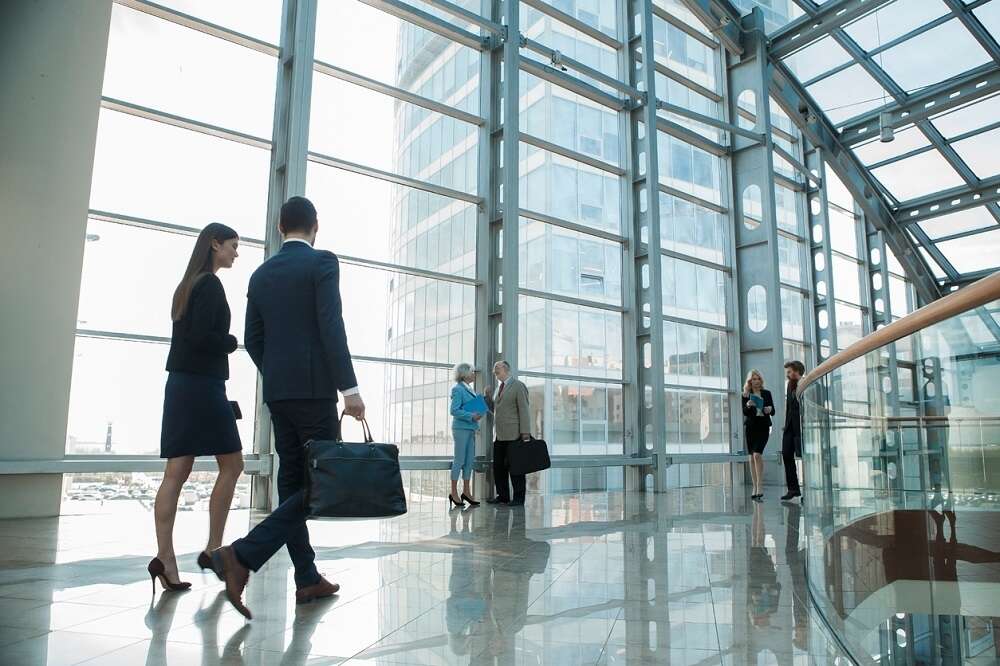
Employee safety and well-being have never been so important. Keeping the workforce healthy is key to productivity, morale and staff retention – and businesses increasingly recognise their legal duty of care obligations. Yet while companies have stepped up as employees return to the office, creating health policies and implementing strong solutions for managing capacity, too many are dropping the ball when it comes to visitors.
Are employees being put at risk because the business is failing to apply internal policies for vaccination and testing to visitors? Do employees know when visitors are due in the building? Are capacity limits being proactively managed? Have ‘meet and greet’ policies been discussed – or shared with visitors? When people haven’t interacted face to face for over two years even the simplest of questions – to mask or not mask, shake hands or not – can create an uncertain, unconfident and uncomfortable workforce.
Dan Harding, CEO, Sign In App, explains why it’s essential for businesses to consider the long term management of visitors in buildings to safeguard employees and ensure their mental and physical well-being.
Lack of Visitor Policy
As restrictions ease, more people are vaccinated and offices begin to re-open, the inevitable return of in-person meetings and necessary on-site visits including contractors is here, whether people like it or not. But how much thought are companies putting into managing the visitor process – and just how is adding visitors back into office life affecting employees, both physically and mentally?
Most businesses have implemented robust strategies to protect employees in a hybrid working environment. Pre-booked hot desking ensures capacity levels are capped. Vaccination and testing expectations are reinforced by health questionnaires before employees arrive in the office – with a clear emphasis on ‘stay at home’ if an individual is feeling unwell.
Companies recognise the need to safeguard employees – indeed, with “The Great Resignation” prompting radical thinking to boost retention, the onus is on businesses to create a smooth, enjoyable hybrid working experience. So why are companies failing to consider the impact of visitors, including contractors, on the workforce?
Overlooked Employee Concerns
Far too many companies appear to have reverted to pre-COVID policies for visitors – including form filling and plastic name tags. They are failing to even consider the health status of visitors or put any thought into the way individuals may want to interact. Simply placing a bottle of hand sanitiser on the reception desk and expecting everyone to carry on as usual is not good enough.
Such attitudes are hardly going to inspire confidence in employees – and will rapidly undermine the hard-won confidence created over the last few months. How are employees going to feel about interacting with visitors if they know the business has not asked any questions about health status? How will they feel when arriving in the office for a pre-booked hot desk only to discover the breakout space heaving with unexpected and unfamiliar visitors?
Employee well-being and safety concerns extend beyond COVID related health issues. With hybrid working, office spaces are often incredibly quiet on certain days of the week – such as Fridays. In addition to ensuring there is always a key holder and a first aider on site, businesses also need to consider the physical safety of employees. Does an individual feel comfortable as the only person in the department or building? Are they happy to have a meeting or take a delivery? It is vital to consider both actual and perceived safety concerns.
Planning Ahead
The entire visitor process needs to ensure the health and safety of both employees and visitors is prioritised. A visitor management system ensures the entire end to end visitor process can be managed, with full visibility at all times. Employees can check the availability of meeting rooms, with alerts being flagged if the number of visitors would take the business over the agreed social distancing capacity. Visitors can also be pre-registered, with contactless scanning at registration avoiding the need for physical interaction.
The pre-registration process also provides a chance to reinforce employee well-being strategies and ensure visitors know what to expect. For example, a company can choose to add a health- questionnaire to the visitor registration process, including questions regarding vaccination and test status and any recent travel destinations.
The meeting invitation can also include a brief overview of company ‘meet and greet’ policies – including mask wearing, hand-shaking and distancing – and ask if the individual has any specific preferences. A simple yes/no tick box for mask wearing, for example, would ensure every meeting attendee knows what is expected – a key consideration if the business is to ensure customers, prospects or even potential recruits have a positive experience on site.
Extending Employee Safety
Knowing who is in the office building at any time is an essential part of health and safety: businesses have a duty of care to protect employees at work. Hybrid working has raised the stakes, making it important for managers to have full visibility at any time and ensure first aiders and key holders are on site. Adding a complete view of visitors on site not only provides that essential real-time view in the event of an emergency but if an individual becomes ill or tests positive, the business has immediate access to the contact details of anyone who has been potentially exposed, allowing effective contact tracing and isolation.
No business wants another lockdown or a return to WFH, but it is important to be realistic and that means being prepared. Capturing detailed visitor information could prove vital should another COVID variant take hold, or a totally different pandemic emerge. It is essential to learn from the mistakes if companies – and countries – are to avoid the economic devastation experienced over the past two years.
A visitor management system allows businesses to impose control over the visitor process – but that presupposes there is a visitor process. Workplace safety has never been more important. Companies need to do so much more than knowing who is on site at any one time. They need to protect employees and manage their expectations in a workplace that will increasingly include strangers. They need to consider how to ensure individuals feel safe on days when the office attendance is low – using CCTV for example. And they need to proactively engage with visitors and contractors, verify their health status, clarify expectations and ensure people do not attend the building if they are unwell.
It is no longer acceptable to pay lip service to employee well-being – creating and enforcing visitor policies must be a core step in successfully and safely getting employees back into the office.


